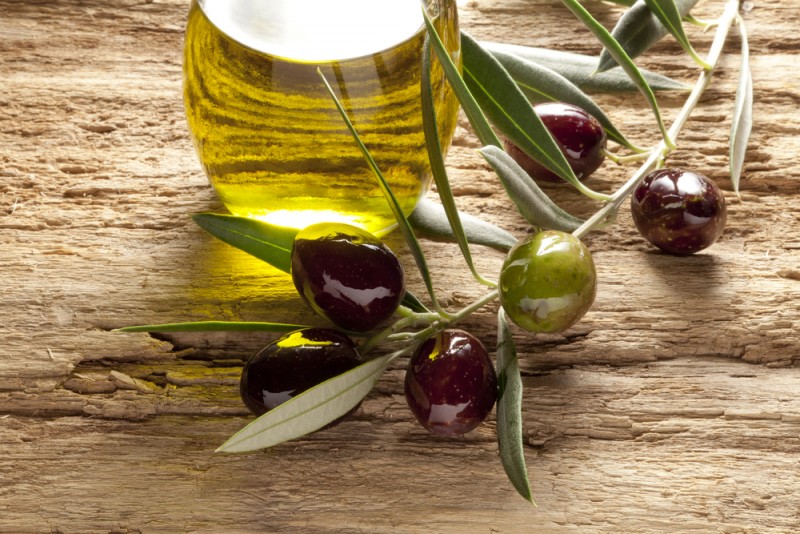
Coconut oil may be trendier, canola oil may be cheaper and sesame oil may be more exotic, but there’s nothing quite like rich, versatile, aromatic olive oil. It’s a healthful cooking base alternative to bad fats like palm oil and margarine, as well as a highlight in itself when paired with a rustic country bread or an antipasti platter. But not all olive oils are created equal, and it takes a bit of know-how to pick and prepare the perfect one.

Olive Oil: Where Does It Come From? How Is It Made?
Olive oil is a native Mediterranean foodstuff, historically associated with the hot climates of countries like Greece, Spain and Italy. The rich, golden oil has been used by Mediterranean peoples since as early as 2000 BC, and has long been a popular alternative to butter, which was difficult to store as it would melt in the heat. To this day, olive oil is closely associated with the Mediterranean and some of the finest oils are still produced there, though it’s now widely circulated throughout the world.
The process for making olive oil is quite simple, and boils down to extracting the fat from whole olives through pressing, racking and filtering. The quality of the product rests largely on the olives themselves, which should be new and fresh.

What To Look For In An Olive Oil
You’re probably used to seeing the label ‘extra virgin’ on olive oil, as the best oils are made from fresh, young olives; ripe ones tend to lose that distinctive flavor. Later-harvest oils are good for sweeter or milder dishes. But as a dressing or antipasti feature, extra virgin is the only way to go (don’t be fooled by the sneaky use of the word “pure” on some other labels). The newer the oil, the lower the acidity and the more aromatic the taste.
When it comes to brands, it can also be best to select a locally-made oil, rather than a mass-produced international brand. Though Southern Europe still produces many of the finest olive oils, a small-scale operation based out of your region is still likely to beat a giant company working out of Italy. However, if you happen across an artisanal Mediterranean oil, snap it up!
Olive oil is not like wine; it does not age or sit particularly well. Try to use your oil relatively quickly, and if you don’t use it often, opt for a smaller bottle. When choosing a packaging, favor dark glass bottles as these tend to protect and preserve the oil best.

Preparation & Serving Tips
A good olive oil can be used as a cooking base, a key ingredient or the main event. Pour some into a saucer with balsamic vinegar and dip in chunks of crusty bread. Toss spaghetti with a couple of teaspoons of fresh oil, a clove of lightly sautéed chopped garlic and some torn basil. Shake two parts oil with one part vinegar, a dollop of seeded Dijon mustard and dash of sea salt for the perfect salad dressing.
But when using olive oil in cooking, such as sautéing, make sure you don’t overheat it, as this can kill its characteristic flavor; try not to exceed 365 degrees (185 degrees Celsius) in the pan. Olive oil is not appropriate for extremely high-temperature cooking, like deep frying (in which case, use canola).
Olive oil is most closely associated with Mediterranean cooking and is certainly your best choice when cooking an Italian or Spanish meal. But this versatile ingredient can also be used in Asian cooking, as well as

baking, including sweets: try this rosemary pear olive oil muffin recipe or this candied orange olive oil cake for a lighter but scrumptious alternative to butter.
What are your favorite olive oil recipes? How do you like to go about your olive oil pairing? Please share in the comments below.
Also Check Out:
Sipping Culture: World’s Best Beer Bike Tours
Sip To Health: A Guide To Tea Brewing & Pairing
Wellness Travel: World’s Top Boozy Yoga Vacations
Jessica Festa
Latest posts by Jessica Festa (see all)
- A Culturally-Immersive Adventure In Mongolia’s Altai Mountains - Jul 8, 2023
- This Recipe Sharing Platform Supports Women In The Culinary Industry (Labneh Recipe Included!) - Nov 5, 2020
- Hiking The Mohare Danda Community Eco-Trek In Nepal - Jun 3, 2020
- 6 Important Questions For Choosing A Responsible Yoga Retreat - May 18, 2020
- How To Create & Grow A Profitable Blogging Business (Ethically) - Jan 18, 2020




